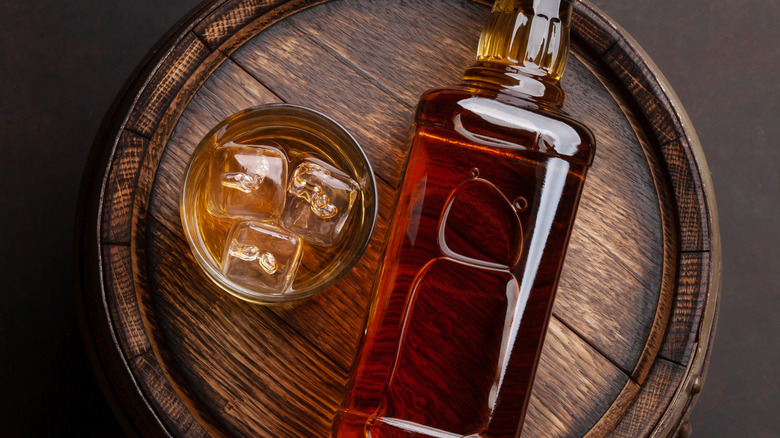Why 1984 Was Such A Special Year For Rare Bourbons
All aged alcohols have good years and bad years. In the wine world, these are called vintages. According to Chateau Grand Traverse, vintages coincide with the year in which the wine grapes were harvested. Following this line, it is common that, despite being grown on the same vineyard, grapes harvested in 2021 will taste different from those harvested in 2024, owing to numerous factors, not the least of which includes that most fickle of things: the weather. Some notable wine vintages include a 1984 California Cabernet Sauvignon, 1982 Barolo, and a 1979 Left Bank Bordeaux (per Wine Enthusiast).
What is true of wine is true of whiskey, albeit in a different way. All whiskeys are aged in barrels, typically made of oak. How long the whiskey stays in these barrels, combined with weather conditions and the climate of the cellar, all contribute, as Eight Oaks Distillery explains, to the eventual taste of the whiskey, which can be aged from anywhere from 5 to 20 years. Bourbon is a little different. According to New Riff Distilling, bourbon is aged for a minimum of two years, though many producers extend that to four years or longer. And, like with all spirits, there is a particularly good year that enthusiasts and collectors covet. For bourbon, that year is 1984.
Bourbon goes from afterthought to front and center
In 1984, bourbon was having something of a 30-year low period. As Baby Boomers began to come into adulthood, they dismissed bourbon as the drink of their fathers, something to be ignored. However, 1984 was also the year all of that would change. That year, distillery manager Elmer T. Lee was tasked with developing a single-barrel bourbon that could stand amongst the likes of a fine cognac or single-malt scotch. What he developed was called Blanton's — inspired by his renowned predecessor Albert Blanton — and it was the first bourbon of its kind (via Club Enologique).
As a result of Lee's efforts, bourbon from 1984 has become akin to other fine spirits from the year, like The Macallan and Karuizawa, per Food and Wine. Four bottles of 1984 LeNell's Red Hook Rye have sold for as much as $200,000. This is owning to the fact that only 892 bottles of LeNell's, which were pulled from four hand-picked barrels, exist (via Go-Bourbon.com). Higher-end bourbons like these are the reason the spirit is no longer an afterthought. According to Vine Pair, bourbon has been on a continuous upward trajectory since 2010. Combine this growth with the new crop of craft distilleries all across America, and you have yourself a winning combination of old and new looking towards a profitable future.

